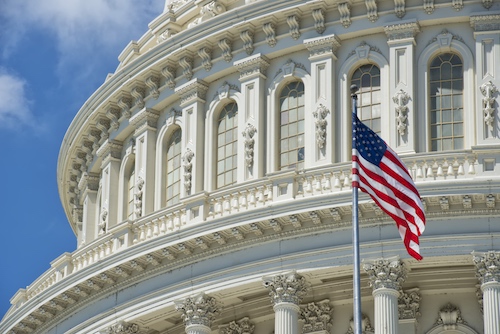Senate Bill Proposed to Provide Subject Matter Eligibility Solution | McDonnell Boehnen Hulbert & Berghoff LLP
Through the vicissitudes of the continuing chaos of subject matter eligibility, Senators Coons and Tillis have been steadfast in attempting to provide a legislative solution. They chaired a series of Congressional hearings in 2019 (see “Senators Tillis and Coons Release Statement on Recent Patent Reform Hearings”), have asked the Patent and Trademark Office for its statistics and other information on patent eligibility (see “Senators Request USPTO to Provide Information on Subject Matter Eligibility”), and have proposed several bills providing various iterations of these solutions (see “Senator Tillis Proposes Patent Eligibility Reform (Again)”). Today, they co-sponsored the latest attempt, entitled “The Patent Eligibility Restoration Act of 2023.”
The bill contains a preamble of “Findings” that amount to a litany of all the reasons why Supreme Court decisions and how they have been implemented by district courts, the Federal Circuit, and the Patent and Trademark Office have “led to extensive confusion and a lack of consistency” regarding eligibility. This portion of the bill reads as a justification (to the Senators’ colleagues, the judiciary, and the public) of the need for subject matter eligibility reform by Congress; it cites for example an “increasing number of inventions ineligible for patent protection” as a consequence of creation of the “judicial exceptions” by the Supreme Court and other courts. It also asserts that “[m]any judges of the United States Court of Appeals for the Federal Circuit and of various district courts of the United States have explicitly expressed the need for more guidance with respect to the meaning of section 101 of title 35, United States Code” as well as “many patent owners, and persons that engage with patent owners, complain[ing] that the interpretation of that section is extremely confusing and difficult to discern and apply with any confidence.” The cosponsors’ intentions with these amendments are plainly set out, starting with the elimination of all judicial exceptions and that “any” invention or discovery in the statutory categories (process, machine, manufacture, or composition of matter) be eligible for patenting apart from explicitly recited exceptions recited in the statute. Also recited in this Findings section is that the other statutory requirements under Section 102, 103, and 112 are not to be used to determine patent eligibility.
The bill provides then provides specific modifications to the patent statute. These begin with the provisions defining a “process” (Section 100), which are amended by deleting the phrase ”includes a new use of a known process” and inserting ”includes a use, application, or method of manufacture of a known or naturally-occurring process.” Also provided is a definition of the word “useful” to mean “with respect to an invention or discovery, that the invention or discovery has a specific and practical utility from the perspective of a person of ordinary skill in the art to which the invention or discovery pertains.”
Section 101 is amended to abrogate the so-called “judicial exceptions” by enumerating an explicit and exclusive set of ineligible subject matter. These exceptions include and are limited to:
• a mathematical formula that is not part of a claimed invention in a statutory category [of process, machine, manufacture, or composition 16 of matter, or any useful improvement thereof];
• a process that is substantially economic, financial, business, social, cultural, or artistic, even though not less than 1 step in the process refers to a machine or manufacture, but not if the process cannot be cannot practically be performed without the use of a machine or manufacture;
• a mental process performed solely in the human mind, or that occurs in nature wholly independent of and prior to any human activity;
• an unmodified human gene as it exists in the human body; or
• an unmodified natural material as that material occurs in nature.
Importantly, the term “unmodified” as it is used with regard to human genes or natural products is defined in the statute not to include embodiments that have been “isolated, purified, enriched, or otherwise altered by human activity” or “otherwise employed in a useful invention or discovery.”
The amendments to Section 101 also include a section on how eligibility is to be determined which includes:
• ‘by considering the claimed invention as a whole and without discounting or disregarding any claim element’; and
• without regard to “the manner in which the claimed invention was made,” “whether a claim element is known, conventional, routine, or naturally occurring,” “the state of the applicable art, as of the date on which the claimed invention is invented,” or any other considerations in the other statutory sections (specifically Section 102, 103, or 112).
Finally, the amendments provide that in infringement actions, eligibility can be addressed by motion of a party when there are no genuine issues of material fact, and that a court can consider permitting “limited discovery” before ruling.
As is frequently the case, introduction of the bill was accompanied by a press release, with the Senators joining in announcing their bill and the necessity for it. In his statement, Senator Coons said:
More than a decade after the Supreme Court waded into patent eligibility law, uncertainty remains about which areas of innovation are eligible for patent protection. Critical technologies like medical diagnostics and artificial intelligence can be protected with patents in Europe and China, but not in the United States. The Supreme Court has repeatedly failed to clarify the law, so Congress must act. I’m proud to join Senator Tillis’ bill that would reform patent eligibility law to bring vital clarity for inventors and innovators and ensure the United States maintains its competitive edge. I look forward to working with all stakeholders as we move this bill in Congress to restore confidence in our patent system.
For his part Senator Tillis’s statement reads:
I have long said that clear, strong, and predictable patent rights are imperative to enable investments in the broad array of innovative technologies that are critical to the economic and global competitiveness of the United States, and to its national security. Unfortunately, our current Supreme Court’s patent eligibility jurisprudence is undermining American innovation and allowing foreign adversaries like China to overtake us in key technology innovations. This bipartisan legislation with Senator Coons maintains the existing statutory categories of eligible subject matter, which have worked well for over two centuries, and addresses concerns regarding inappropriate eligibility constraints by enumerating a specific but extensive list of excluded subject matter. I look forward to continuing to work with all interested stakeholders on this important matter. Passing patent eligibility reform remains one of my top legislative priorities during my second term.
Also set forth in Senator Coons’ official website is a statement from two former Directors of the U.S. Patent and Trademark Office, David Kappos and Andrei Iancu, now Co-Chairs of the Council for Innovation Promotion (C4IP), who said:
C4IP applauds Senators Tillis and Coons for introducing critically important legislation to correct patentable eligibility law. The Patent Eligibility Restoration Act of 2023 is much-needed legislation to foster the development of next-generation technologies across many innovative industries, including artificial intelligence, medical diagnostics, quantum computing, and telecommunications, to name a few. With products in these sectors currently categorically ineligible for patent protection, the United States is losing its standing as the world’s innovation leader. By introducing this legislation, Senators Tillis and Coons are standing up for American inventors and ingenuity, and are positioning the United States to continue its leadership in these technologies of the future.
The draft bill has two immediate impediments to passage (others will no doubt arise during the legislative process). The first and perhaps most significant is that to the extent the Supreme Court has based its subject matter eligibility jurisprudence as an exercise in its role in limiting Congress to the constraints in the Constitution, that its power to grant patents must “promote progress,” it is likely to strike down any law that abrogates its judicial exceptions as being ultra vires of the proper exercise of Article I power. Two generations ago Giles Sutherland Rich (and P.J. Federico) were able to introduce obviousness into the statute by casting it as an enactment of Supreme Court precedent reaching back to Hotchkiss that patentability required something more than novelty. It was the Supreme Court’s variable ex post facto definitions of what that ineluctable something was (flash of genius, etc.) that had made “the only patent that is valid . . . one which [the] Court [had] not been able to get its hands on” and that provided the impetus for introducing obviousness as a statutory requirement. But how later-Judge Rich effected this enactment was done with sufficient subtlety and obeisance to the Court’s precedent that in Graham v John Deere the Supreme Court opined that Section 103 was just that, codification of the principle it had enunciated all along. This bill lacks that subtlety and accordingly is much less likely to pass supreme judicial muster.
The other aspect of the bill likely to face stiff political rather than judicial opposition is in the changes to patent eligibility of human genes and natural products. It is extremely likely that some groups, particularly the American Civil Liberties Union and its allies in the Myriad case will argue that the definition of “unmodified” would permit patenting of isolated human genes and oppose the bill on that basis (as they have in other embodiments of reform bills from the Senators (see “ACLU (Predictably) Opposes Patent Subject Matter Eligibility Proposal”).
Neither of these impediments are incapable of being overcome by amending the scope of the statute, of course but their existence makes less likely from the outset that the bill will provide the solution the Senators seek.






